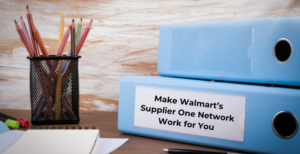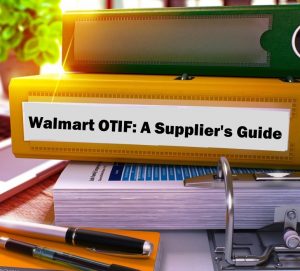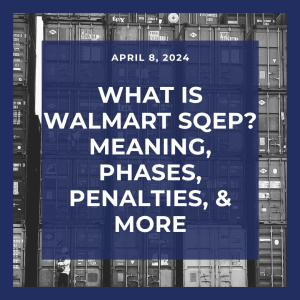Retailers and suppliers work together to grow sales and lower costs. Achieving one or both of these goals begins by making improvements to the supply chain. From the purchase of raw materials to the final customer purchase, small supply chain improvements can mean huge profits added to the bottom line annually.
But what is the first step in improving the supply chain? It’s actually improving the process of improving the supply chain. Individual partners can improve their area of the supply chain, but a good decision manufacturing could have adverse repercussions in distribution.
Openly sharing planning and communication between the supply chain links creates the opportunity for smoother transitions and deters costly errors. This process of supply chain improvement collaboration is known as CPFR.
What Is CPFR?
Collaborative Planning, Forecasting and Replenishment (CPFR) is a set of actions taken by supply chain partners to plan and communicate tasks to meet customer demand while reducing cost. It includes business planning, sales forecasting, and replenishment of raw materials and finished goods.
Why Is CPFR Important?
CPFR supports the goal all suppliers and retailers strive for: get product to the customer at the lowest cost possible. By focusing on a collaborative effort from all parties in the supply chain, opportunities and details are not missed by each area working in a silo.
The CPFR process streamlines many supply chain functions, lowers costs in inventory and logistics, and improves supply chain efficiency and inventory movement. By establishing a common process and defined metrics, CPFR aids retailers and suppliers in improving their processes and reaching their goals. Better communication and collaboration are key to the successful implementation of CPRF.
What Are the Key Features of CPFR?
CPFR can be broken down into four key features:
1. Strategy and Planning
Strategy and planning require charting out or defining the collaborative working and communication between all partners in the supply chain. This is also where procedures, responsibilities, and individual roles are defined.
2. Demand and Supply Management
Demand and supply management lays out the goals for profit. This includes the company’s planning of orders, forecasting orders, and the actual sales.
3. Execution
Execution takes on the physical work laid out by the previous processes. This piece involves all areas responsible for producing, stocking, dispatching, and delivery of materials to retailers or customers.
5. Analysis
Analysis goes back and examines the effectiveness of the process. How did we do? The CPFR analysis brings into account the management of exceptions in the fulfillment process and the assessment of supply chain performance.
What Is the CPFR Process?
Using the key features listed above, the CPFR process is laid out in nine actionable steps:
- Develop an agreement between supply chain partners. It’s very important to define the conditions for CPFR cooperation in the beginning. Retailers, suppliers, and manufacturers must be in agreement on how they will increase communication and formalize any procedures and processes.
- Create one business plan. The business plan has to be developed and agreed upon at the beginning. This ensures every participant in the supply chain shares a common goal for the success of the businesses. This is not a mission statement or vague “wish list” of goals. The business plan has to spell out precise information on the organizational management of the partners as well as order data.
- Forecast the sales. Using the business plan created in Step 2, sales are now forecasted. When forecasting sales, take into account production and inventory planning.
- Identify exceptions/deviations in the sales forecast. This is the time to compare various forecasts made at different stages in the supply chain. Look for significant exceptions or deviations. This will help identify any fluctuations early in the process.
- Resolve exceptions/deviations in the sales forecast. Communicate all exceptions and deviations immediately to the responsible and impacted partners. Adjust the sales forecast after the exceptions and deviations have been clarified.
- Create the order forecast. Retailers and suppliers develop an order forecast based on the sales data. This relies on the framework conditions of the business plan.
- Identify exceptions/deviations in the order forecast. This is similar to the action taken in Step 4. Analysis is done on exceptions or deviations between the various order forecasts of retailers and suppliers.
- Resolve exceptions/deviations in the order forecast. This is similar to the action taken in Step 5. Exceptions and deviations are communicated, updated, and renewed in the order forecast.
- Generate the orders. The actual ordering of the goods happens upon receiving the final order forecast.
What Are the Disadvantages of CPFR?
How can a more collaborative process aimed at lowering costs have disadvantages? While not a disadvantage, per se, the biggest hurdles come at the beginning: change and implementation.
Companies new to adopting CPFR have to be prepared to get out of their silos. It can be a major change (albeit a good one) for their company culture. Opening lines of communication between different areas of the supply chain can also bring increased responsibility and trust to new areas (confidentiality, non-disclosure agreements, etc.).
Implementation is merely getting the company executives to agree to CPFR. A better supply chain process is an easy sell, but changing company processes is never a smooth talk. Once the decision-makers can see the payoff and be assured of shared trust amongst the collaborating areas, CPFR can sell itself.
Does Walmart Use CPFR?
The CPFR model was an initiative co-led by Walmart in 1995. The company began piloting the model with select suppliers in Walmart Stores soon after. As early as 1997, the CPFR model was having positive impacts on store stock. One item with the most improvement was Listerine. After implementing CPFR, Listerine’s in-stock average went from 87% to 98%.
Walmart still uses the basics and transparency of CPFR with its suppliers via Retail Link®. The company gives suppliers access to a single forecast number so they can provide feedback on other factors impacting the number and recommend adjustments.
Conclusion
In conclusion, there is no ‘one fit for all’ strategy for CPFR — the basic procedure described in this piece could be altered in any way you like for your company. It is an iterative process that is process-driven, which means that is affected by the working practices in the partner companies. There needs to be a change in internal processes to adapt to the new normal on implementing CPFR.
To learn more about improving supply chain processes and working with Walmart, request a free consultation from 8th & Walton.
Complete the form below to schedule your free consultation.



